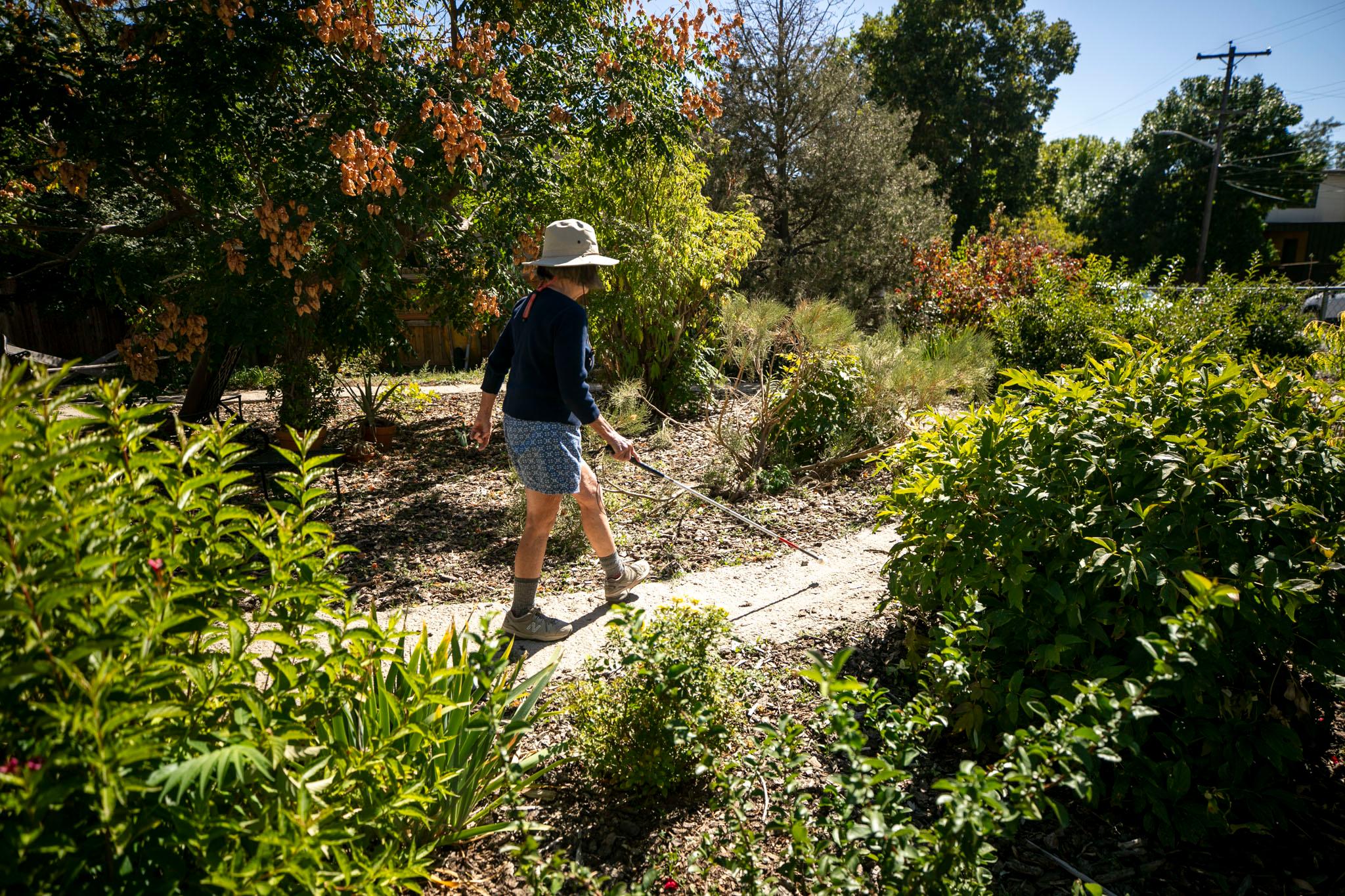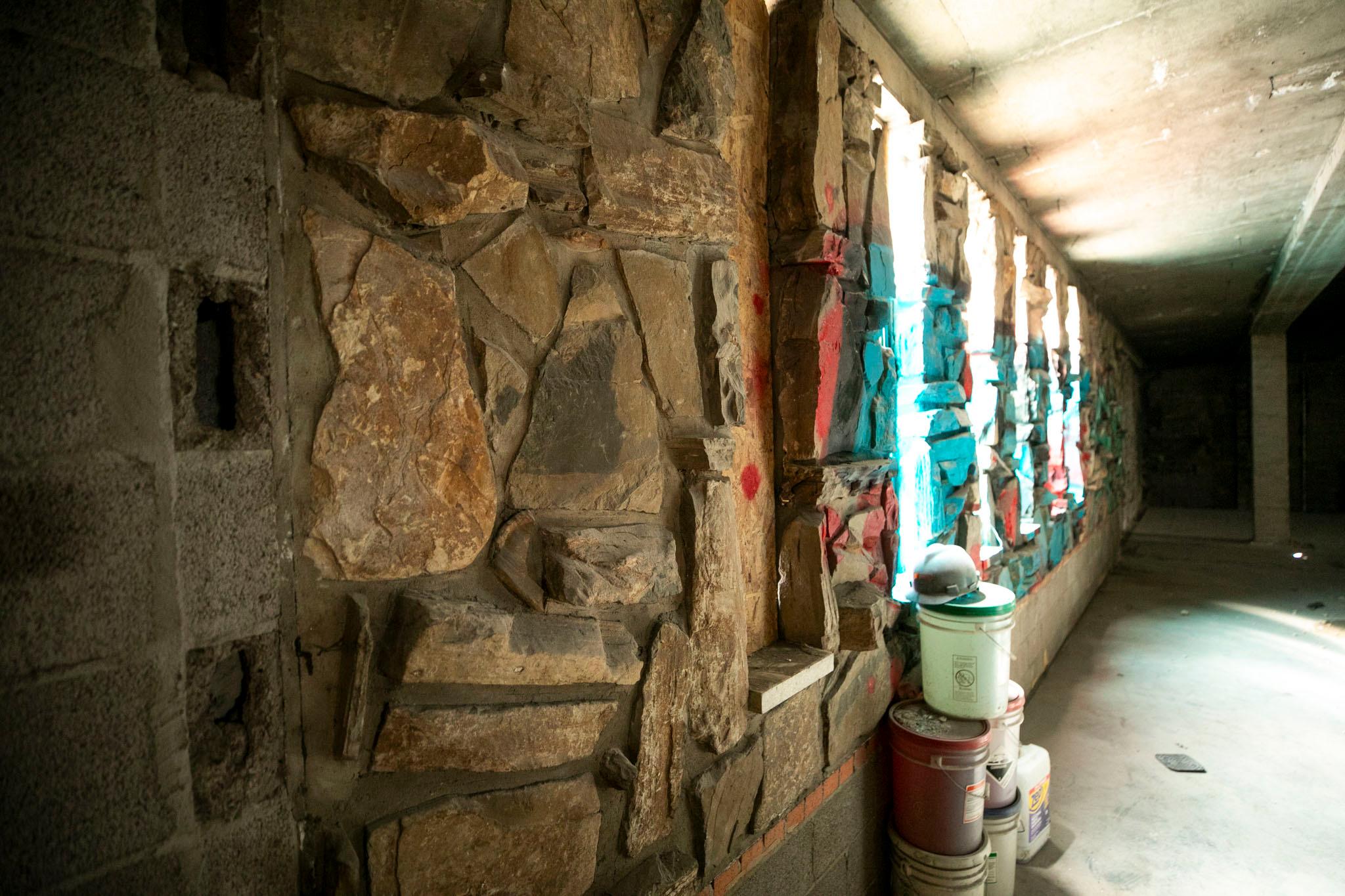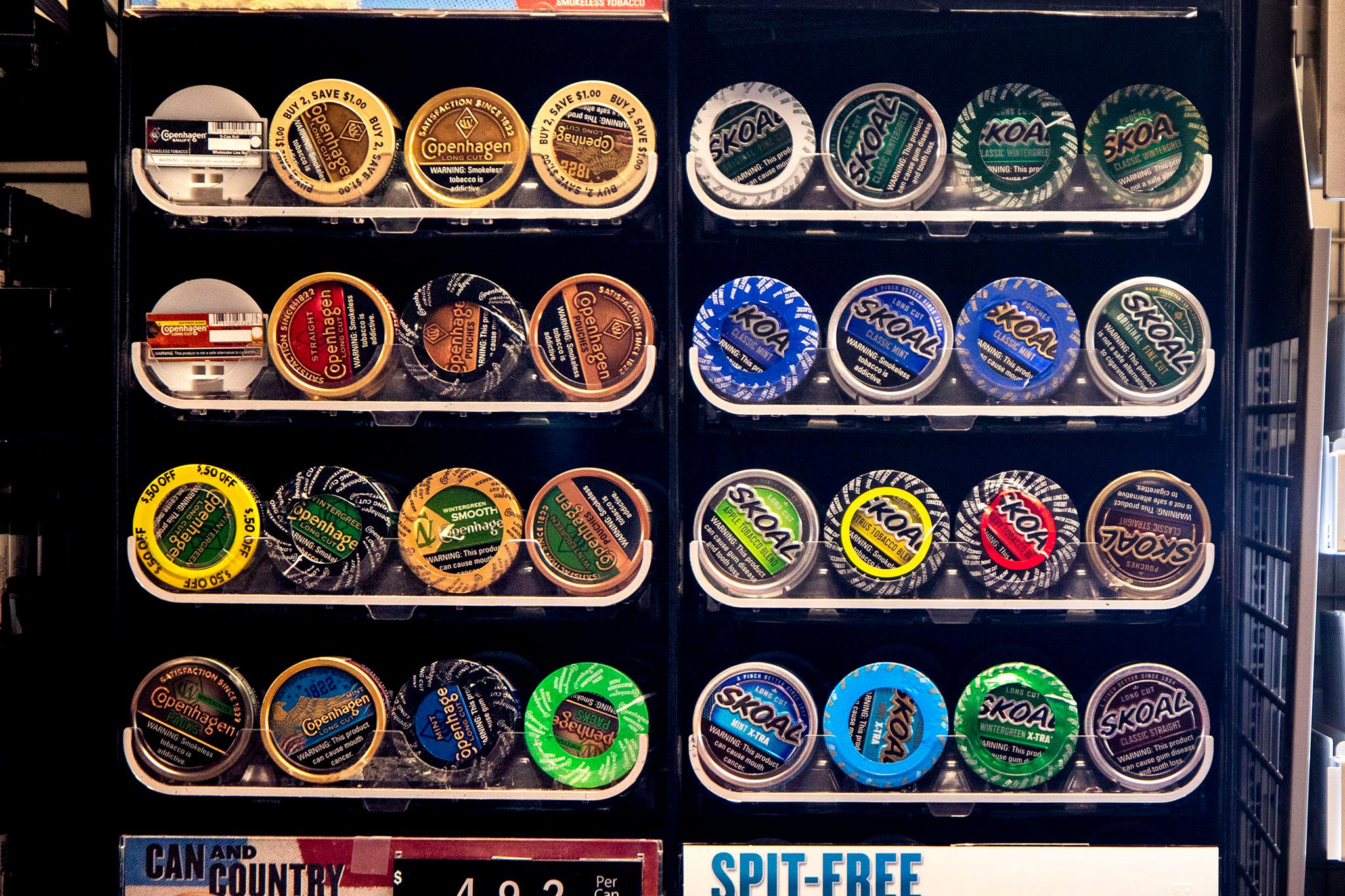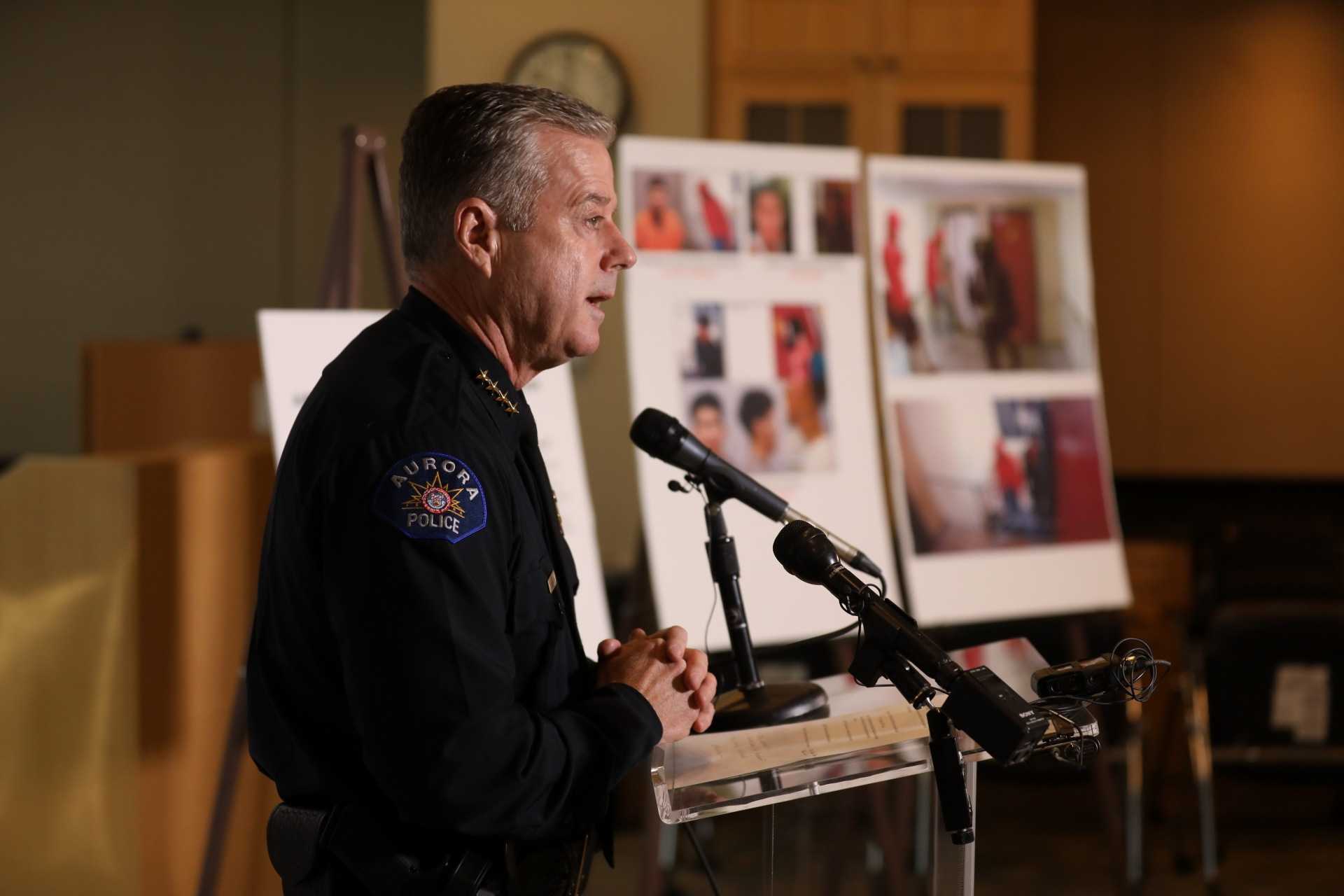Mary Anne Overbay takes my arm and we walk from her house into the Highland neighborhood, where she’s lived since 2005. As we pass a mix of old homes, scrapes and renovations, she notes that she could never afford to move here today.
But that’s not what we’re here to talk about.
Overbay has a visual impairment, which began when she was 11 and has gotten more significant over time. She can’t drive anymore—these days, she gets around using a cane. Overbay lives alone, and tells me she typically walks much more slowly without a guide to help her skirt obstacles.
And the obstacles are near constant. Leaving the house isn’t just a matter of navigating specific obstructions. It’s a constant state of starts and stops to avoid tripping hazards.
“There's streets that I don't cross anymore,” she says. “Thirty-eighth and Federal and Speer. No way. No way.”

Denver is on the cusp of a brand new, ambitious sidewalk repair program, levying fees on property owners to bring in millions of dollars to fix and build the city sidewalks. Some of Denver’s most dangerous streets are getting pedestrian upgrades. A massive investment in bus infrastructure is coming to Colfax Avenue. Advocates and politicians have pledged to end traffic deaths completely in this decade.
But in recent years deaths and injuries have risen. It turns out retrofitting a city built for cars into a city built for pedestrians, cyclists and people with disabilities is easier said than done. And Denver has a long way to go.
In the meantime, Overbay feels forgotten, stuck navigating a city not built for people like her.
She had read my recent articles about the new sidewalks program, and reached out to share her ideas about how to make it a success for people with disabilities. Last week, she agreed to walk with me around her neighborhood to teach me what it’s like to move through Denver with a visual impairment.

As soon as we leave Overbay’s house, we find the sidewalk blocked by two abandoned electric scooters.
“My favorite method of transportation,” Overbay jokes after I point them out — she can’t ride them because of her disability. “It's everywhere. Constant, everywhere. They've just been everywhere.”
It’s something disability advocates have raised alarm about for a while. City council member Chris Hinds, who uses a wheelchair, has been looking into potential legislation to enforce rules against riding and parking scooters on sidewalks.
We continue along sidewalks that are smooth in some areas and jagged and broken in others. Overbay’s cane keeps getting stuck.
Alleys are one of Overbay’s biggest sticking points.
Not long after the scooters, the sidewalk drops suddenly into a curb, where the entrance to an alley interrupts the sidewalk.
Overbay knows it’s coming because she has a clear mental map of her neighborhood. Fences along the sidewalk, which she can feel with her cane, help her keep her sense of place.
“Here's a really fun alley, huh?” she jokes.
The alley isn’t paved; it’s just a mix of dirt and broken pieces of concrete, where her cane gets caught again. Then we’re confronted with another abrupt curb where the sidewalk begins again.
She’s memorized these problem spots, and her cane helps her anticipate the drops, especially if she walks slowly. But it’s harder for people in wheelchairs.

What she wants is a curb cut — a concrete ramp connecting the sidewalk to the street, that helps people with disabilities cross without abruptly stepping off the curb. She says the new sidewalk repair program will not help people with disabilities without them.
According to the Denver Department of Transportation and Infrastructure, sidewalks with pre-existing curb cuts will get them back when they're repaved. But the nature of the program doesn't allow for the city to pave alleys using the funding.
“It's great if they level the sidewalks, but if they don't put curb cuts and pave the alleys, it won't make it any easier for someone in a wheelchair,” she says.

As we walk, Overbay points out personal landmarks.
There’s the intersection where an SUV once blocked the curb cut, forcing her to walk off the curb and into the street.
Then there’s the bus stop where a road work sign appeared one day on the sidewalk. She had to clutch the bus stop sign to avoid walking into the obstruction. She relies on public transit to get around, but it’s more difficult these days. With service cuts during the pandemic, her bus route’s frequency dropped from every 15 minutes to every half hour — and now, just once per hour.
Overbay points out how at certain intersections the street humps upward in the middle. It’s OK for her, but she emphasizes how it’s all more difficult for people in wheelchairs.
Her cane gets stuck again in overgrown weeds poking up through the sidewalk, providing yet another tripping hazard. Up above, our heads brush through overgrown tree branches that Overbay has no way of sensing with her cane.

Soon, we run into Overbay’s mail carrier, Geri Lawrence.
“Is that Mary Anne?” Lawrence calls from down the street.
They catch up. Overbay gave Lawrence a canna lily plant, and she wants to know how it’s doing. It’s blooming. After years working in a call center with the help of assistive technology, Overbay is now retired and spends most of her time in her garden.
Community is critical for Overbay. In the winter, she sometimes relies on Lawrence to tell her if the sidewalks are shoveled. If the sidewalks are full of snow and ice, she can’t go outside — it’s just too treacherous.
Even when residents do shovel their sidewalks and the city plows the streets, the snow can end up in the curb cut — that ramp connecting the sidewalk and the street. She often has to walk right through it.
“I get off the bus and I have to go over this big hump of snow to get to the sidewalk,” she says. “How does a person in a wheelchair do that? It's hard enough for me.”
The snow also makes navigating difficult. Overbay’s usual landmarks she recognizes with her cane, like fences and changes in the sidewalk, are covered with snow.
“I got lost once and this wonderful man found me, because when there's snow on the ground, it's really hard,” she recalls. “You lose your orientation. And he found me and walked me to the bus stop.”
Overbay gave him a canna lily, too.

But even with support, there are some places Overbay just can’t go to alone.
She lives just a mile from Confluence Park, but there’s too much open space there for her to navigate independently — she’d get lost.
There are also the streets she won’t cross anymore.
“I don't want to get killed,” she says. “I don't want to cross Federal anymore.”
As we turn the corner back toward her house, I ask Overbay what needs to change to make the city more accessible.
She wants to make sure the city paves the alleys and includes curb cuts when planning the sidewalk repairs that will come in the next decade.
“Otherwise, it's a pretty big waste of money,” she says.
But she wants action from her neighbors too. People need to shovel, and pull their weeds, and cut their overgrown branches, and stop blocking curb cuts with their cars, and stop leaving scooters and trash bins on the sidewalks.
“What I want is what will never happen,” she says.
Standing outside her garden, Overbay tells me about the Spanish classes she took years ago.
“There’s a saying in Spanish,” she says. “El sol brilla para todos. The sun shines for everyone.”
But that’s not how she feels.
“Sometimes I don't feel the rays,” she says. “Sometimes I feel like I've been left in the dark. But it's probably not just me. It's probably other people with disabilities too. And as I wrote, we're a very small percentage of the population, but we're not inconsequential.”
For a moment, Overbay appears to get emotional. But it’s not long until she’s joking again about her “favorite” alleys and sidewalks. Before we leave, she turns toward the scooter, still sitting on the sidewalk by her house, and insists on posing with it for a photo.
Want to share your experience navigating Denver? Drop us a line at [email protected].













